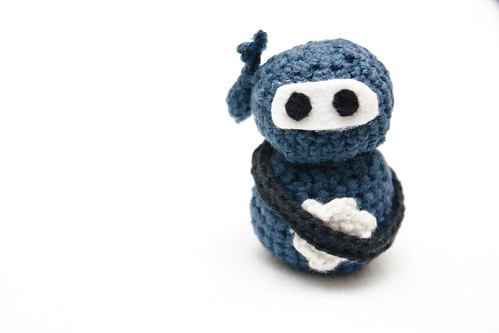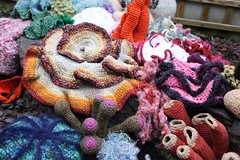Ok so in my time off in the wonderful land of unemployment (between jobs! I’m not a bum usually I promise) I have a lot of time on my hands. I feel very unproductive so I make things to feel productive, hence my recent foray into....*cough* crochet.
Now you probably normally associate the word crochet with grandmas, cups of tea and doilies. But you can crochet anything such as...
 |
| Vegetables! - from Eternal Sunshine on etsy |
 |
| Ninja attack! - from PaRaP on flickr |
 |
| Lorenz manifold in crochet form - University of Bristol |
And now others have followed suit making hyperbolic planes resulting in crochet coral reefs. The first Crochet Coral Reef popped up in 2007 and 'satellite reefs' are being created all over the world. For more info see here.
 |
| Crochet coral reef - stitchlily |
RiAus are looking for a project manager to manage the creation and installation of a hyperbolic crochet coral reef in Adelaide. More details here. So get your hooks out and start crocheting, it's not too hard to learn (took me a few hours to get the hang of it) there's plenty of tutorials around the web, and you too could have your own hyperbolic coral reef, Lorenz manifold or ninja army.
